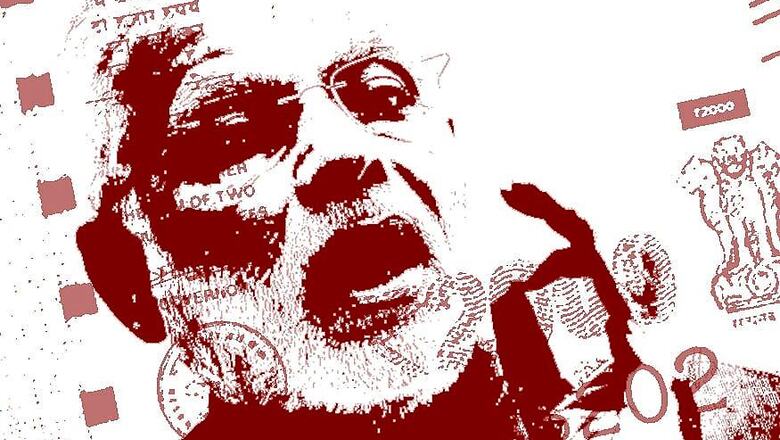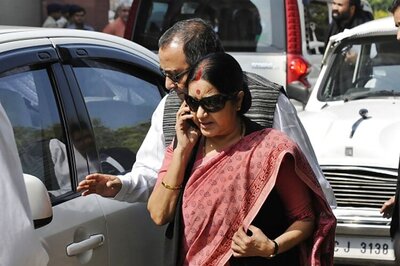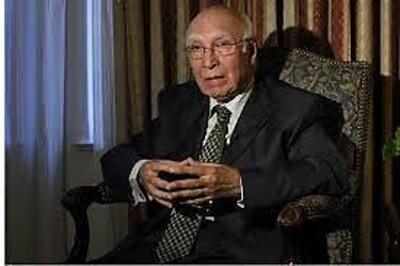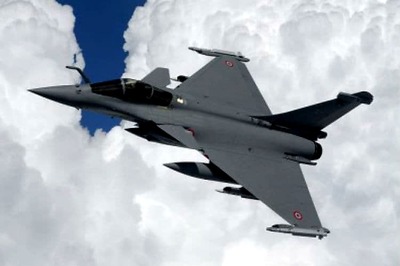
views
New Delhi: Narendra Modi firmly believes in setting the agenda. He prepares his own pitch, sets his own rules, forcing opposition to play on his own terms and conditions. The first ten months of the last calendar year were however different.
From Rohith Vemula suicide to Kanhaiya Kumar arrest, the subaltern student politics conflated with Ambedkarite movement had worked to reinforce the "suit boot ki sarkar" narrative. Dovetail the amalgam with images of cow-vigilantes on the loose attempting to mete out instant justice in PM's own state. When the Prime Minister intervened, RSS the ideological mentor of the BJP took exception to PM branding a majority gau-rakshaks anti-social.
"I have seen Mr. Modi's politics from close quarters. He's adept at image-makeover. That's his biggest strength. From an able administrator who rebuilt Gujarat after massive earthquake in 2001 to Modi as Prime Minister, he has contested no two elections on same agenda"; says a BJP insider who has closely watched Modi's ascension to power.
Any signs of what might go into creating a new narrative were hardly discernible as late as June. It is only in retrospect now that BJP leaders join two and two to interpret what Modi said at BJP’s National Executive meeting in Allahabad. The conclave was being held just a fortnight of Finance Ministry notifying Income Declaration Scheme (IDS), opening up sluice gates one last time for declaration of un-accounted wealth.
"In Allahabad Prime Minister indicated for the first time that he was preparing to take some really tough decisions of black money hoarders. And he made it very clear that he will spare none"; recalls a BJP executive member.
Five months later the actual import of PM's message was felt within the party circles and outside when on the midnight of November 8 the demonetisation move was announced.
"So those who say that note-bandi was not a well thought out exercise are completely wrong. Similarly, I refuse to believe that the Prime Minister has not weighed both political and economic implications of a decision of this magnitude," says a party leader.
The year-end marks the end of the self-promulgated fifty-day deadline set by the Prime Minister. The new–year would usher in Demonetisation Part Two. Prime Minister has indicated that he will follow banning of old high value legal tenders with a clampdown on benami property.
But any transformation of this magnitude is also fraught with risks. Both in terms of political manoeuvre and policy implementation. One misstep; and a time tested socio-political pyramid can come crashing down.
The bottom line is: the ruling dispensation will have to convince people that demonetisation has been the great leveler and not a mere catharsis in the neo-liberal milieu. That will happen if there are tangible gains for the poor and tangible losses for those falling foul of the law.
Even for the Opposition, the impact of demonetisation extends beyond assembly polls slated for 2017. Make no mistake. This is a fight for 2019 general elections. And Congress knows it well. The move is directed at the core of Congress' political constituency.
"Even the BJP as a party in power has a limited role in charting the future course of action. The matter now rests between the people and the PM. There is direct communication and there are no intermediaries, not even the RSS"; says a BJP leader.
The question is whether a fair analogy can be drawn between Congress' success in 1971 and demonetisation-2016. Can the 8th November announcement by the Prime Minister disrupt the very fundamentals of politics crystallised during the Mandal-Kamandal era?
Pre-Mandal politics of the Hindi-heartland operated in an entirely different paradigm. Or maybe not. This will be put to an early electoral test in the upcoming UP polls.
BJP in its new avatar is attempting to metamorphose and take on a socialist-patriotism identity.




















Comments
0 comment